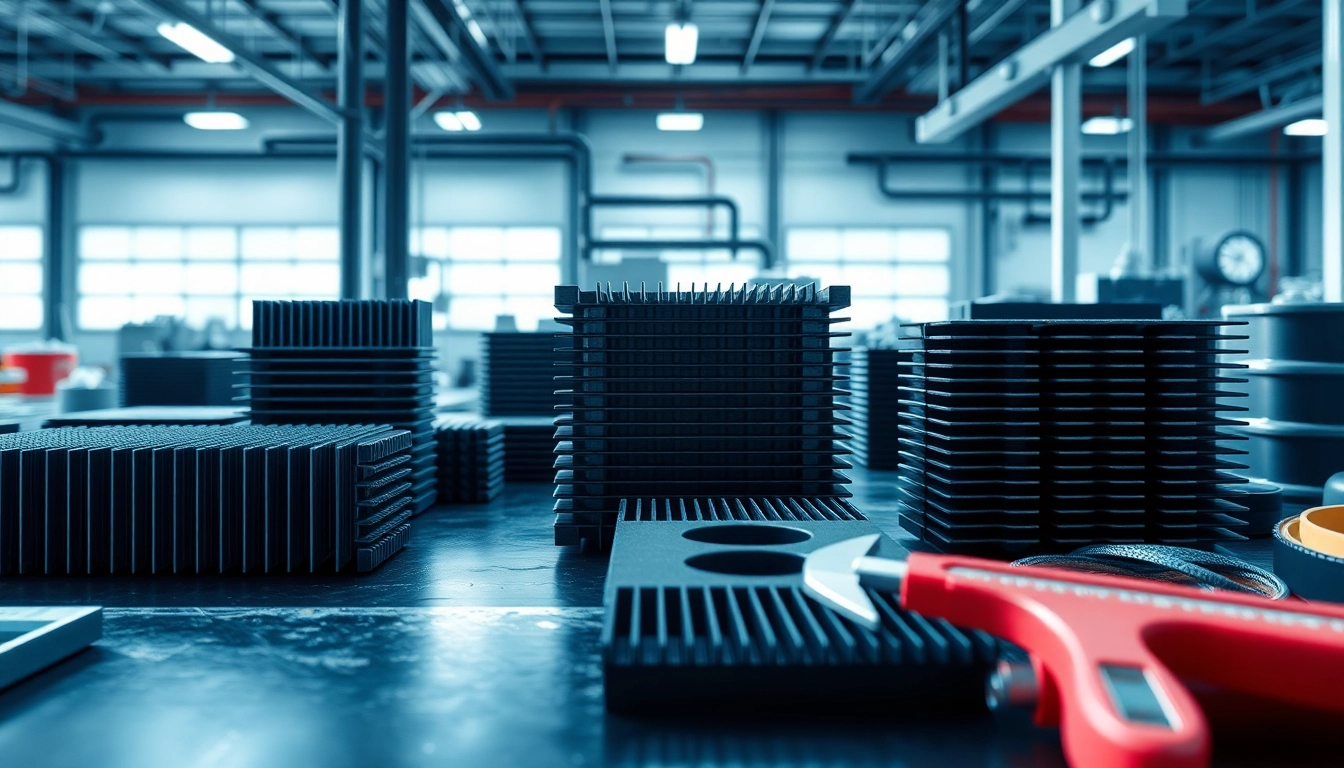Introduction to Thermal Management Materials
As modern electronics continue to evolve, the need for effective thermal management materials has become more critical than ever. Efficient heat dissipation is essential for maintaining the performance and longevity of electronic components. With devices becoming smaller and more powerful, the challenge of managing heat generation is increasingly significant. This comprehensive guide explores various thermal management materials, their applications, and how they’re crucial in electronics cooling.
Understanding Thermal Management in Electronics
Thermal management in electronics involves controlling the temperature of devices to ensure optimal performance. When electronics are used, they generate heat, and if this heat is not effectively dissipated, it can lead to overheating. This overheating can cause performance degradation, reduced reliability, and even permanent damage to components.
To prevent these issues, engineers utilize various thermal management strategies. This includes the implementation of thermal management materials that enhance heat dissipation, improve energy efficiency, and maintain operational stability. The choice of materials and technologies used can greatly influence the effectiveness of thermal management strategies.
Importance of Efficient Heat Dissipation
Effective heat dissipation is essential for several reasons:
- Performance Maintenance: High temperatures can slow down computing processes, resulting in decreased performance. Maintaining lower temperatures ensures devices operate at their designed efficiency.
- Extended Lifespan: Overheating can significantly shorten the life of electronic components. By managing heat effectively, manufacturers can ensure their products last longer.
- Safety: Excessive heat can pose safety hazards, leading to potential system failures. Thermal management systems mitigate the risks associated with overheating.
- Energy Efficiency: Efficient heat management can contribute to overall energy savings, reducing operational costs and resource consumption.
Overview of Key Thermal Management Materials
Thermal management materials can be categorized based on their specific applications and functions. Key materials include thermal interface materials (TIM), thermal adhesives, phase change materials (PCM), gap fillers, and thermal pads. Each type serves a unique purpose in ensuring effective thermal management, whether it’s bridging gaps between surfaces or acting as a barrier to heat flow.
Types of Thermal Management Materials
Thermal Interface Materials: Functions and Benefits
Thermal Interface Materials (TIMs) are critical for improving the thermal contact between heat-generating components and cooling devices, such as heat sinks. TIMs fill the microscopic gaps between surfaces, which improves effective thermal conductivity. By eliminating air gaps—known for their insulating properties—TIMs facilitate improved heat transfer from the component to the heat sink.
There are several types of TIMs, including:
- Thermal Greases: Often based on silicone or other compounds, thermal greases are widely used due to their good thermal conductivity and ability to fill microscopic surface imperfections.
- Thermal Pads: These are pre-formed materials that can conform to surfaces; they are easier to apply compared to greases and provide good thermal conductivity.
- Phase Change Materials: PCMs are solid at room temperature but can change to a liquid state at higher temperatures, making them effective in managing thermal load variations.
The selection of the appropriate TIM depends on factors such as thermal conductivity, ease of application, and specific use cases. Their effective application significantly enhances the cooling capacity of electronic systems.
Phase Change Materials: How They Work
Phase Change Materials (PCMs) are engineered substances that absorb, store, and release thermal energy during the phase transition process. These materials remain solid at room temperature and melt into a liquid state as temperatures rise, absorbing large amounts of heat. When the surrounding temperature falls, they revert to a solid state, releasing stored heat.
PCMs are ideal for applications where temperature spikes occur intermittently, as they can effectively buffer these changes without the need for continuous power input. They are commonly used in:
- Consumer Electronics: Used in laptops and smartphones to maintain optimal operating temperatures during high-performance tasks.
- Electric Vehicles: Assist in managing battery temperature to improve efficiency and safety.
- Building Materials: Integrated into walls and roofs to regulate indoor temperatures without mechanical intervention, showcasing their versatility beyond electronics.
The proper integration and selection of PCMs can lead to significant improvements in thermal performance and contribute to enhanced energy efficiency in various applications.
Conductive Adhesives and Their Applications
Conductive adhesives offer another avenue for effective thermal management. These adhesives not only bond components but also provide thermal and electrical conductivity. They are particularly beneficial in environments where soldering is challenging or where flexible bonds are necessary.
Key applications include:
- Mounting Heat Sinks: They can secure heat sinks to components while ensuring effective heat transfer.
- Assembling Printed Circuit Boards (PCBs): Useful in applications where electrical connections must also be thermally conductive.
- Adhering Thermal Management Devices: In devices where mobility is essential or components must flex, conductive adhesives provide both bonding and heat transfer capabilities.
When selecting conductive adhesives, consider properties such as thermal conductivity, cure time, and operating temperature range to ensure optimal performance for your specific application.
Choosing the Right Thermal Management Materials
Key Considerations for Design Engineers
Choosing the right thermal management materials is pivotal for achieving desired thermal performance in electronic devices. Design engineers must consider several factors:
- Operating Environment: Understand the thermal and mechanical conditions in which the device will operate. This includes temperature extremes, humidity, and potential exposure to chemicals.
- Material Compatibility: Ensure that the chosen thermal management materials are compatible with the substrates and other materials in the device to avoid adverse reactions.
- Thermal Performance Requirements: Calculate the thermal load and determine the required thermal conductivity and materials capable of meeting such demands.
- Cure Time and Application Method: Factor in the time needed for materials to cure and the methods of application, where ease of installation can be a significant advantage.
Performance Metrics to Evaluate Materials
Evaluating thermal management materials requires a nuanced understanding of various performance metrics, including:
- Thermal Conductivity: Measured in Watts per meter Kelvin (W/m·K), this metric defines how efficiently heat is transferred through the material.
- Thermal Resistance: This is the measure of a material’s ability to resist heat flow, which is crucial when determining overall thermal management effectiveness.
- Mechanical Properties: Consideration of the tensile strength, flexibility, and shear strength of materials is essential, particularly in dynamic applications.
- Longevity and Stability: An assessment of how materials perform over time under various environmental influences, ensuring long-term effectiveness.
Common Mistakes to Avoid
Design engineers often encounter pitfalls in the selection and implementation of thermal management materials. Common mistakes include:
- Ignoring Surface Preparations: Failure to properly clean and prepare surfaces can result in inadequate thermal contact.
- Overlooking Environmental Factors: Not accounting for temperature variation or chemical exposures can lead to premature material degradation.
- Neglecting to Test: Implementing materials without adequate testing for thermal performance can lead to failures down the line.
Applications of Thermal Management Materials
Consumer Electronics and Their Cooling Needs
Consumer electronics, including smartphones, laptops, and gaming consoles, are increasingly powerful, generating significant amounts of heat during performance-intensive tasks. Effective thermal management in these devices is essential for preventing overheating and enhancing user experience.
Applications involve:
- Heat Sinks: Used to dissipate heat away from critical components like CPUs and GPUs, often bolstered with TIM to maximize thermal transfer.
- Thermal Pads: Installed between chips and metal casing to improve heat flow and ensure components remain cool.
- Active Cooling Systems: In high-performance devices, hybrid solutions involving fans and thermal management materials maximize heat dissipation.
Automotive Applications for Heat Management
In the automotive industry, managing heat is critical for both performance and safety. Thermal management materials play a vital role in:
- Electric Vehicle Batteries: PCMs and TIMs are used to regulate battery temperatures, enhancing performance and safety during operation.
- Engine Components: Conductive adhesives and thermal tapes serve to ensure effective heat transfer from engine to heat sinks.
- Passenger Comfort: Thermal management strategies are integrated into vehicle interiors to regulate temperatures, creating a comfortable driving environment.
Medical Devices: Ensuring Safe Operations
In the medical field, precision and reliability are paramount, and thermal management materials contribute significantly to device functionality. Applications include:
- Patient Monitoring Systems: TIMs help in maintaining optimal temperatures for sensitive electronics in various medical appliances.
- Diagnostic Equipment: Ensuring these devices operate at controlled temperatures is crucial for accurate readings.
- Thermal Pads in Surgical Tools: Used to manage heat generation from devices like lasers or ultrasound equipment to ensure safety during use.
The Future of Thermal Management Materials
Innovations on the Horizon
The field of thermal management materials is continually evolving, driven by demand for more efficient, compact, and sustainable solutions. Innovations include:
- Nanomaterials: Nano-enhanced TIMs and coatings provide significant performance improvements in thermal conductivity and stability.
- Smart Materials: Responsive materials that adapt to temperature changes dynamically enhance real-time thermal management capabilities.
- Integration of PCMs in Building Materials: Emerging trends to incorporate advanced PCMs into building structures for energy efficiency showcasing the versatility of thermal materials.
How Sustainability Impacts Material Choices
With growing awareness of environmental impacts, manufacturers are increasingly required to seek sustainable thermal management solutions. This involves:
- Biodegradable Materials: Research is underway to develop thermal interface materials that have less environmental impact upon disposal.
- Recyclable Components: Encouraging the use of materials in electronics that can be recycled at the end of their lifecycle, reducing waste.
- Energy Efficiency: Materials that contribute to overall energy efficiency help reduce the carbon footprint of electronic devices.
Preparing for Emerging Technology Trends
As technology advances, the demand for advanced thermal management solutions will only grow. Engineers and manufacturers must be prepared by:
- Staying Informed: Keeping abreast of the latest materials and technologies in thermal management to remain competitive.
- Investing in R&D: Allocating resources to research and develop new materials that can enhance thermal performance and sustainability.
- Collaborating Across Fields: Engaging with researchers, engineers, and manufacturers from different sectors to foster innovation and address the evolving needs of thermal management.



